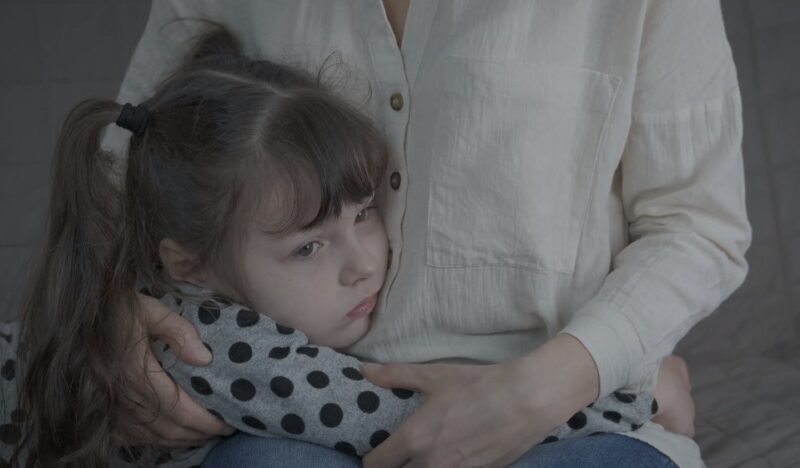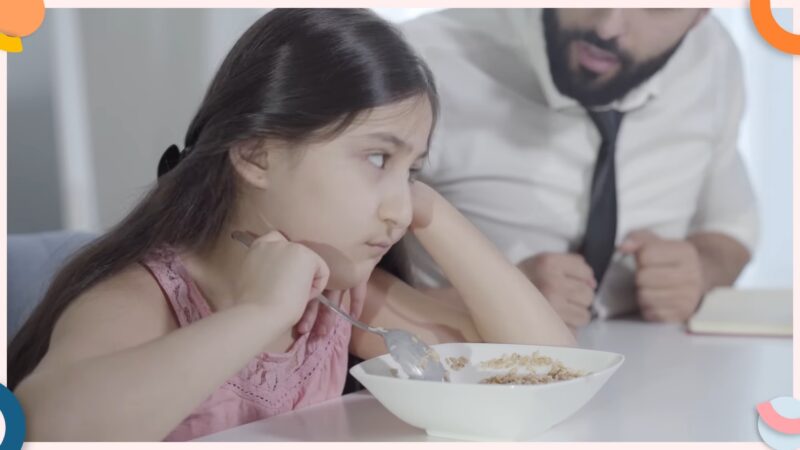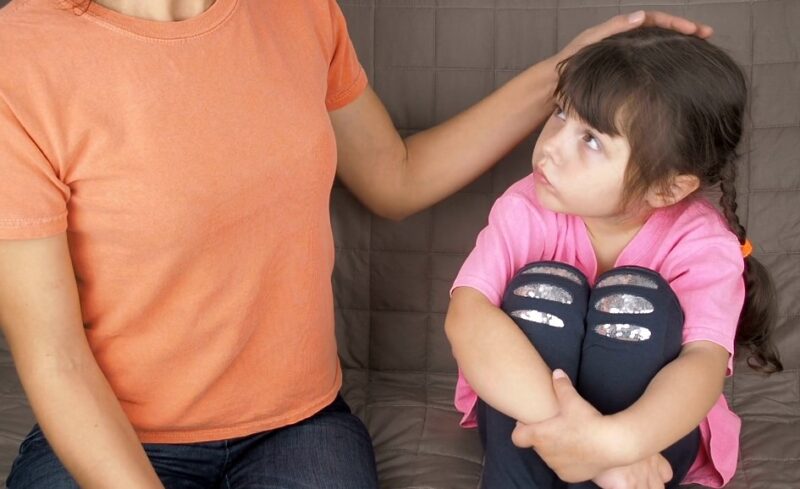Eating disorders are complex mental health conditions that can have serious implications for physical health, emotional well-being, and overall quality of life. While often associated with teenagers and adults, children are not immune.
Recognizing the early signs in children can be the key to early intervention, which can lead to better outcomes. Today we’ll unveil the subtle and sometimes overlooked signs of eating disorders in children, aiming to equip parents, caregivers, and educators with the knowledge to identify and address these issues at their onset.
Different Types of Eating Disorders
Eating disorders are not just about food. They are often manifestations of deeper emotional or psychological issues. In children, these can be particularly challenging to identify and address.
| Eating Disorder | Description |
|---|---|
| Anorexia Nervosa | Anorexia involves extreme food restriction, fear of gaining weight, and a distorted body image. Children with anorexia may appear very thin due to self-imposed starvation. |
| Bulimia Nervosa | Bulimia is characterized by episodes of binge eating followed by compensatory behaviors like vomiting, excessive exercise, or laxative use. It’s often accompanied by feelings of guilt and shame. |
| Binge Eating Disorder | This disorder involves consuming large amounts of food in a short period and feeling a lack of control during these episodes. Unlike bulimia, there are no regular compensatory behaviors. |
| Avoidant/Restrictive Food Intake Disorder (ARFID) | ARFID is characterized by an extreme lack of interest in eating certain foods, leading to nutritional deficiencies and growth issues. It’s not driven by body image concerns. |
| Pica | Pica involves eating non-nutritive substances like dirt, paper, or chalk. This behavior is not developmentally appropriate and can lead to health complications due to ingesting harmful materials. |
| Rumination Disorder | Children with rumination disorder regurgitate food, either re-chewing and swallowing it or spitting it out. This behavior isn’t due to medical conditions and isn’t related to anorexia or bulimia. |
| Other Specified Feeding or Eating Disorder (OSFED) | OSFED includes symptoms of disordered eating that don’t fit the criteria for other specific disorders, but still pose health risks and require attention. |
When do these appear in Children?
While this problem is more commonly diagnosed in adolescents and adults, children as young as 7 or 8 can show symptoms. Recent studies suggest that the onset age is decreasing, making it even more crucial for parents and caregivers to be vigilant. The reasons for this trend are multifaceted, ranging from societal pressures to genetic predispositions.
Physical Signs and Symptoms

Physical changes can be the first noticeable indicators of an eating disorder. While some might be subtle, others can be more overt, especially when the disorder progresses.
Weight Fluctuations
One of the most evident signs is a sudden or gradual change in weight. This could be either weight loss or gain. Children with Anorexia may become noticeably thin, while those with Bulimia or Binge Eating Disorder might fluctuate between weights. It’s essential to remember that weight alone isn’t a definitive sign; it’s the pattern and context that matter.
Gastrointestinal Issues
Children with this problem may frequently complain of stomachaches, constipation, or acid reflux. These symptoms can result from irregular eating patterns, purging, or consuming large quantities of food. If gastrointestinal complaints become recurrent without any apparent cause, it might be a sign of an underlying disorder.
Behavioral and Emotional Indicators

Eating disorders don’t just manifest physically. They also bring about a range of behavioral and emotional changes that can be indicative of the problem.
Obsession with Food and Diet
Children showing an unusual preoccupation with food, calories, fat content, or dieting might be displaying early signs of such a problem. They might spend excessive time reading food labels, measuring portions, or discussing dieting techniques, which is atypical behavior for their age group.
Social Withdrawal and Secrecy
Children with this problem might become more withdrawn, avoiding social situations, especially those involving food. They might eat in secret, hide food, or visit the bathroom immediately after meals. This secrecy stems from the shame or guilt they feel about their eating habits.
How Does It Impact Academic and Social Life?

A problem like this can significantly affect a child’s performance in school and their interactions with peers. The consequences can be both immediate and long-term.
Decline in Academic Performance
Kids with eating disorders may find it challenging to concentrate in class due to nutritional deficiencies or mental preoccupation with food and body image. Their grades might drop, and they may lose interest in activities they once enjoyed. Teachers and school counselors might notice these changes and should communicate their observations to parents.
Social Isolation
As we’ve mentioned, children struggling with this kind of problem might isolate themselves from their peers. They may avoid school events, parties, or any gatherings where food is involved. This isolation can lead to feelings of loneliness, exacerbating the emotional toll of the disorder.
Common Misconceptions

There are many myths surrounding this topic, which can hinder early detection and intervention. Dispelling these myths is crucial for understanding and addressing the issue effectively.
“It’s Just a Phase”
One common misconception is that restrictive or binge eating is just a phase that the child will outgrow. While it’s true that children can go through phases, persistent and extreme behaviors around food shouldn’t be dismissed. Early intervention can prevent the disorder from escalating.
“Only Girls Have Eating Disorders”
Another damaging myth is that problems with food only affect girls. Boys can and do suffer from eating disorders. The signs might be different, and they might be less likely to speak about their struggles due to societal stigma, but they are equally at risk.
Strategies for Parents and Caregivers

If you suspect your child might be developing an eating disorder, it’s essential to approach the situation with sensitivity and care. Your support can make a significant difference in their recovery journey.
Open Communication
Initiate a non-judgmental conversation with your child. Listen more than you speak, and ensure they feel heard and understood. Avoid placing blame or expressing anger. Instead, express your concern and love, emphasizing their well-being over any other factor.
Seek Professional Help
If you believe your child has a problem, it’s crucial to consult a professional. This could be a pediatrician, psychologist, or a specialist. They can provide a proper diagnosis and recommend a suitable treatment plan.
The Role of Media and Peer Influence
In today’s digital age, children are exposed to various media sources that can inadvertently contribute to the development of eating disorders. Understanding these influences can help in early detection and prevention.
Social Media and Body Image
Children are increasingly exposed to idealized body images on platforms like Instagram, TikTok, and YouTube. These platforms often showcase unrealistic beauty standards, which can lead to children feeling inadequate or dissatisfied with their bodies. Recognizing and limiting such exposure can be a proactive step in prevention.
Peer Pressure and Comments
Peers play a significant role in a child’s life. Casual comments about weight, appearance, or eating habits can deeply affect a child’s self-perception. It’s essential to teach children resilience and self-worth, ensuring they don’t internalize negative comments.
Importance of Education and Awareness

Awareness is a powerful tool in the fight against this problem. Both children and adults can benefit from proper education on this topic.
School Programs and Workshops
Schools can play a pivotal role by introducing programs that promote healthy body image, self-esteem, and nutrition education. Workshops that address the dangers of eating disorders and the importance of seeking help can be beneficial.
Parental Education
Parents should be equipped with the knowledge to identify and address potential eating problems. Workshops, seminars, or online resources can provide parents with the tools they need to support their children effectively.
How to Treat These?

The specific treatment plan will depend on the type of eating disorder, its severity, and the individual’s specific needs.
Medical Stabilization
If the individual is medically unstable due to severe malnutrition or complications from their eating disorder, immediate medical intervention may be necessary. This can include hospitalization to address immediate health concerns.
Nutritional Counseling
A registered dietitian can provide guidance on healthy eating patterns, meal planning, and restoring nutritional health. The goal is to help the individual achieve and maintain a healthy weight and to correct any nutritional deficiencies.
Psychotherapy
This is a cornerstone of eating disorder treatment. Different therapeutic approaches can be used, including:
- Cognitive Behavioral Therapy (CBT): Helps patients identify and change negative thought patterns and behaviors related to their problem.
- Family-Based Therapy (FBT): Especially useful for adolescents with eating disorders, this approach involves the entire family in the treatment process.
- Interpersonal Psychotherapy (IPT): Focuses on resolving interpersonal issues that may contribute to the problem.
- Dialectical Behavior Therapy (DBT): Helps patients develop coping strategies to manage emotional triggers.
Medication
Some individuals benefit from medication. For example, certain antidepressants can be effective for those with bulimia nervosa or binge-eating disorder. It’s essential to discuss potential risks and benefits with a psychiatrist or primary care provider.
Group Therapy

Being part of a group can help individuals feel understood and supported by others who are going through similar experiences.
Inpatient or Residential Treatment
For those with severe eating disorders, inpatient or residential treatment may be necessary. These programs provide a structured environment where individuals can focus on recovery with 24/7 support.
Outpatient Programs
These programs allow individuals to live at home while attending treatment sessions at a facility. The frequency of sessions can vary based on individual needs.
Aftercare and Relapse Prevention
Recovery is an ongoing process. After the initial treatment, ongoing therapy and support groups can help individuals maintain their recovery and prevent relapse.
Treatment for Co-occurring Disorders
Many individuals also have co-occurring mental health conditions, such as depression, anxiety, or substance use disorders. It’s crucial to address these conditions simultaneously for comprehensive treatment.
FAQs:
What causes eating disorders in children?
A combination of genetic, biological, behavioral, psychological, and social factors.
Are they preventable?
While not entirely preventable, promoting a healthy body image can reduce the risk.
Can dieting lead to them?
Extreme or frequent dieting can increase the risk of developing an eating disorder.
Are there support groups for families of children with these problems?
Yes, many organizations offer support groups for families to help them cope and support their loved ones.
How are eating disorders diagnosed?
Through a combination of physical examinations, psychological evaluations, and discussing eating habits.
Final Thoughts
Eating disorders in children are a pressing concern, but with awareness, education, and timely intervention, they can be addressed effectively.
It’s crucial for everyone involved in a child’s life to be vigilant, understanding, and supportive, ensuring the child receives the care and help they need.
